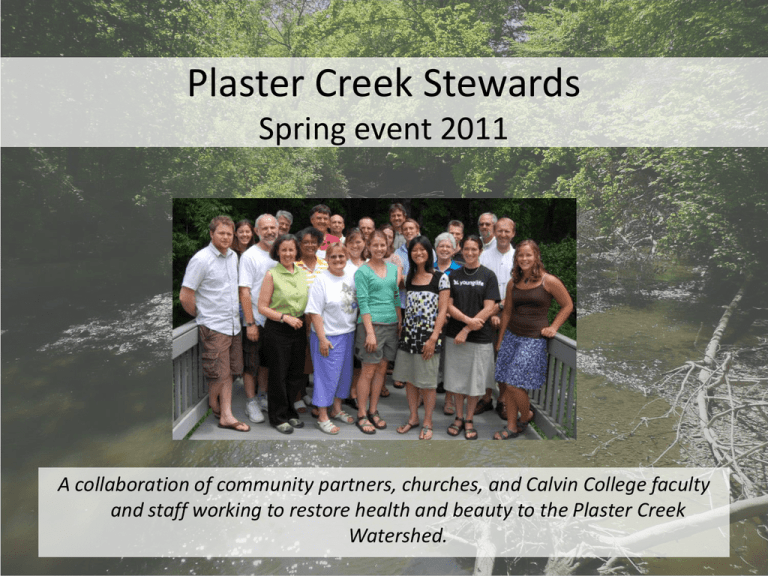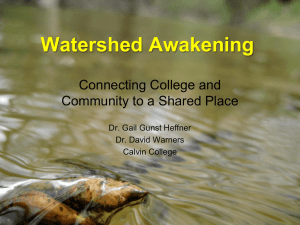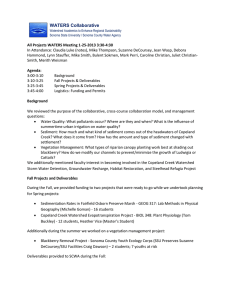The Unfolding of Plaster Creek Stewards
advertisement

Plaster Creek Stewards Spring event 2011 A collaboration of community partners, churches, and Calvin College faculty and staff working to restore health and beauty to the Plaster Creek Watershed. Quick outline: Profile of a humandominated watershed • New organizational developments • What’s wrong with the watershed? • Engaging the whole watershed—upper and lower New developments • Multi-year organizational plan • Hired a full-time project manager Three-part approach • Research – Which areas of the watershed should we prioritize? – Which problems occur in which areas? Which restoration activities are appropriate in which areas? – Monitoring – Historical research – Integrated with the biology department course curriculum and faculty research. Roosevelt Park CRC Woodlawn CRC – Spring and fall events—education and volunteer components Alger Park CRC – Summer workshops Madison CRC – Partnerships among churches, environmental organizations, government, Christ Church businesses… (WMEAC, DEQ, Friends of Grand Rapids Parks, Grand Rapids Parks Church of the Servant Department, KCD, Pioneer Construction…) • Education and Outreach • On-the-ground restoration work – Hydrology & habitats What’s wrong with Plaster Creek? “Designated uses” of Plaster Creek Use Status Indigenous aquatic life/wildlife habitat Impaired Warm water fishery Impaired Partial body contact recreation Threatened Total body contact recreation Impaired Agriculture (irrigation) met Source: Plaster Creek Watershed Management Plan. Fishbeck, Thompson, Carr, & Huber, Inc. 2008 An environmental issue and a social justice issue What causes these impairments? • • • • • E. coli contamination Nutrient pollution Thermal pollution Toxic substances Sediment E. coli •Sources •Cattle access to the creek •Runoff from animal agriculture/feedlots •Pet waste •Faulty sewer connections and septic tanks •Wildlife •Result: 12 of the Creek’s 14 miles are unsafe for human body contact •E. coli concentrations are often 10 to 100 times greater than the limit for safe human contact—especially in wet weather. Nutrient pollution •Too much of a good thing •Main inputs: •Sediment •Animal manure •Fertilizers •Sewers and septic systems Thermal Pollution Toxic substances Point source and non-point source Siltation • Sediment load estimate: 180 tons per year •Caused by: •Urban runoff •Agricultural runoff •Construction •Stream bank erosion Why does the creek flood so badly? Approximate % impervious surfaces Tile drains & soil compaction http://esciencenews.com/articles/2010/09/27/tile.drainage.directly.related.nitrate.loss • E. coli contamination • Nutrient pollution • Thermal pollution • Toxic substances • Sediment Two work opportunities Native stream-side planting at Roosevelt Park Garlic mustard pull at Ken-O-Sha park




